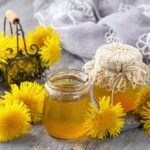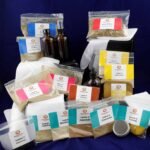How Indigenous Knowledge Shapes Our Use of Traditional Herbs
Indigenous knowledge represents centuries of wisdom passed down through generations, rooted in a deep understanding of nature and its resources. When it comes to traditional herbs, this knowledge serves as a guide for identifying, preparing, and utilizing plants for health and healing.
From treating common ailments to addressing spiritual imbalances, indigenous practices have shaped how we perceive and use traditional herbs today. In this article, we’ll explore how this knowledge influences herbal medicine and why it remains relevant in modern healthcare.
The Foundation of Indigenous Knowledge
Indigenous knowledge is a holistic system of understanding developed through observation, experience, and cultural traditions. It is deeply intertwined with local ecosystems and reflects a sustainable relationship with nature.
Key Characteristics:
- Context-Specific: Tailored to the local environment, climate, and flora.
- Sustainability-Focused: Promotes responsible harvesting and conservation of plants.
- Intergenerational: Passed down orally, preserving traditions and wisdom.
Traditional Herbs in Indigenous Cultures
1. Spiritual Significance
In many indigenous cultures, herbs hold spiritual meaning, used in rituals, ceremonies, and prayers.
- Example: Sage is often burned in Native American smudging ceremonies to cleanse and purify spaces.

2. Healing Practices
Herbs are used to treat physical, emotional, and spiritual ailments.
- Example: Indigenous communities in Africa use devil’s claw to relieve pain and inflammation.
3. Preventative Medicine
Many indigenous practices focus on maintaining health rather than just curing illness.
- Example: Ayurvedic traditions in India emphasize daily use of herbs like turmeric to boost immunity.
How Indigenous Knowledge Shapes Modern Herbal Medicine
1. Identifying Medicinal Plants
Indigenous knowledge provides invaluable insights into which plants are beneficial for health.
- Modern Example: The anti-malarial drug artemisinin was derived from sweet wormwood (Artemisia annua), a plant used in traditional Chinese medicine.
2. Methods of Preparation
The preparation of herbal remedies often follows traditional techniques to enhance their potency.
- Example: Indigenous healers in the Amazon rainforest brew ayahuasca, a medicinal tea with psychoactive properties, using age-old methods.
3. Sustainable Harvesting Practices
Indigenous communities emphasize the importance of harvesting herbs in ways that do not deplete natural resources.
- Example: Aboriginal Australians practice rotational harvesting to ensure the long-term availability of medicinal plants like kakadu plum.
The Role of Indigenous Herbalists
Guardians of Knowledge
Herbalists act as custodians of indigenous wisdom, ensuring that knowledge is preserved and respected.
Cultural Healers
Herbalists often blend physical and spiritual healing, addressing the root causes of illness.
- Example: In African traditions, herbalists use both medicinal plants and spiritual guidance to treat patients.
Educators
Herbalists play a vital role in passing down knowledge to the next generation, safeguarding cultural heritage.
Traditional Herbs and Global Health
1. Influence on Pharmaceuticals
Many modern medicines have roots in traditional herbs identified by indigenous knowledge.
- Example: Aspirin was developed from salicin, a compound found in willow bark, long used by Native Americans for pain relief.
2. Integrative Medicine
The integration of traditional herbal practices with modern healthcare is growing globally.
- Example: Hospitals and clinics increasingly offer complementary therapies using herbs like chamomile for anxiety.
3. Cultural Recognition
Indigenous contributions to medicine are being acknowledged in global health discussions.
Challenges in Preserving Indigenous Knowledge
1. Loss of Biodiversity
Deforestation and climate change threaten the habitats of medicinal plants.
2. Knowledge Erosion
The oral transmission of knowledge faces challenges as younger generations adopt modern lifestyles.
3. Intellectual Property Rights
The commercialization of traditional herbs often leads to the exploitation of indigenous knowledge without fair compensation.
Promoting Ethical Use of Traditional Herbs
1. Respect for Indigenous Communities
Acknowledging the contributions of indigenous knowledge ensures respect and recognition.
2. Collaboration in Research
Partnerships between scientists and indigenous communities can lead to more sustainable and effective use of herbs.
3. Conservation Efforts
Protecting ecosystems that are home to medicinal plants is vital for preserving this knowledge.
Examples of Indigenous Herbs Shaping Modern Healthcare
1. Neem (India)
- Use: Antibacterial and anti-inflammatory properties.
- Impact: Used in modern skincare and dental products.
2. Rooibos (South Africa)
- Use: Caffeine-free tea for relaxation and health.
- Impact: Exported globally as a health drink.
3. Echinacea (North America)
- Use: Boosts the immune system.
- Impact: Widely used in over-the-counter cold and flu remedies.
The Future of Indigenous Knowledge in Herbal Medicine
1. Revitalizing Traditions
Efforts are being made to document and preserve indigenous knowledge for future generations.
2. Sustainable Practices
Global initiatives are focusing on sustainable harvesting and ethical sourcing of medicinal plants.
3. Bridging the Gap
The collaboration between traditional herbalists and modern healthcare providers holds immense potential for holistic healing.
Conclusion
Indigenous knowledge has been instrumental in shaping our understanding and use of traditional herbs. This wisdom offers a sustainable, culturally rich, and effective approach to health and healing.
By respecting and integrating indigenous practices into modern medicine, we not only enhance our healthcare systems but also honor the communities that have safeguarded this knowledge for centuries. Traditional herbs are more than just plants—they are a testament to humanity’s enduring connection with nature.



